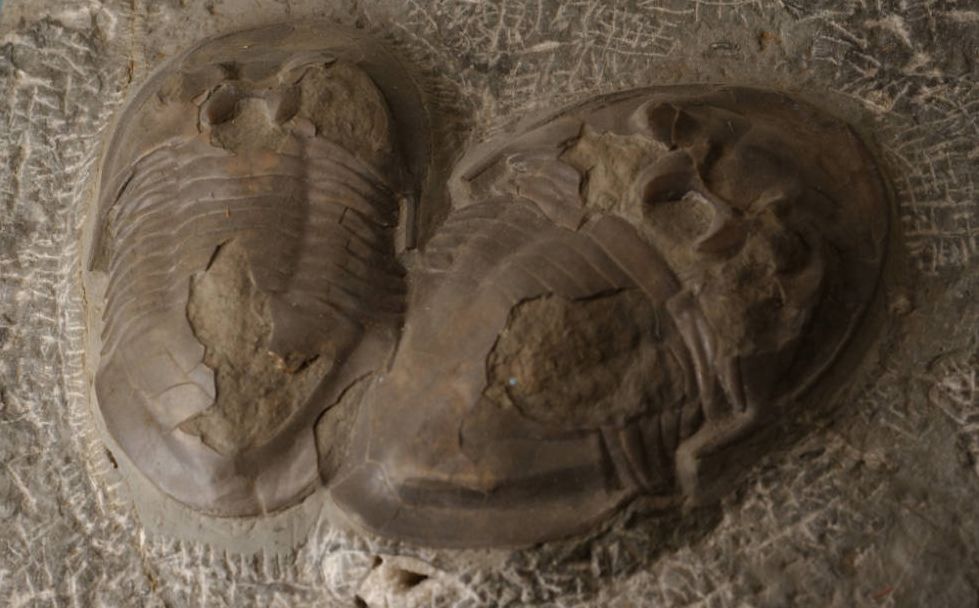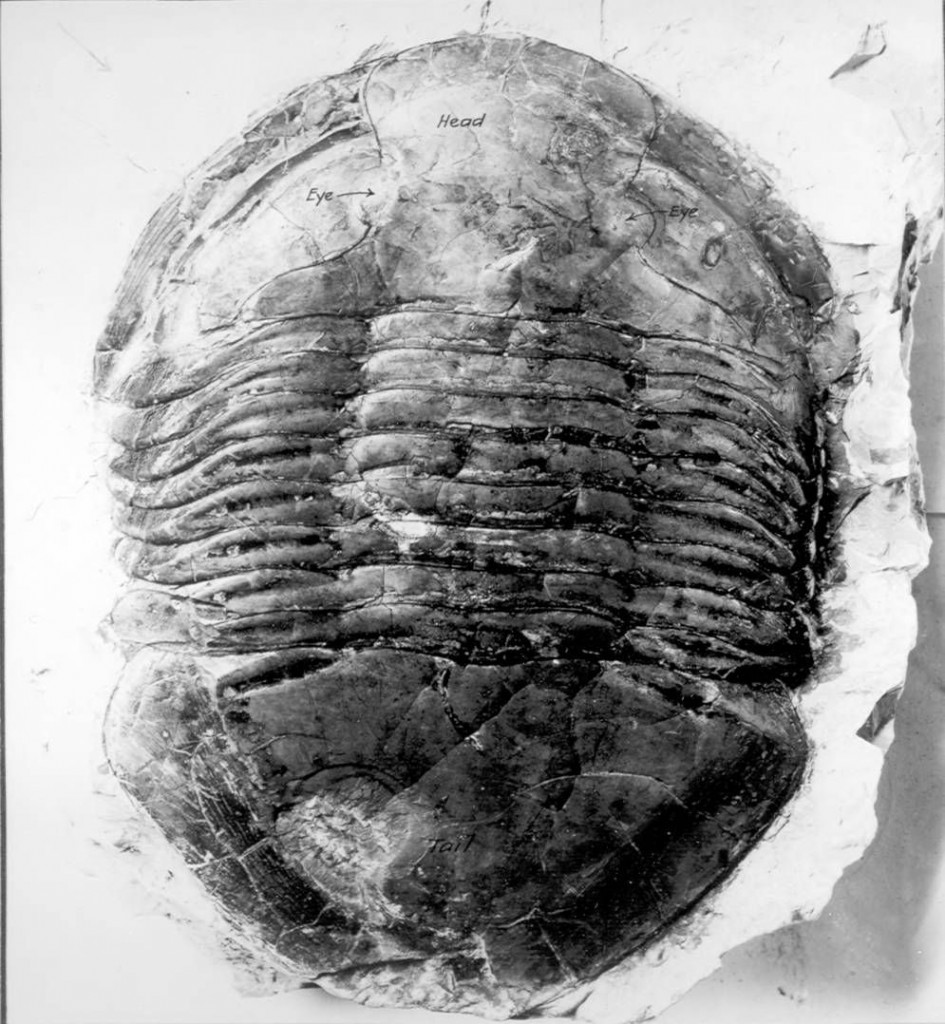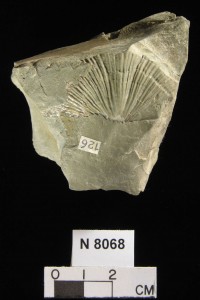Prehistoric Ohio Memory

While many of the images we highlight on Ohio Memory are from the relatively recent past, we also have a variety of photographs showing off items from much, much further into Ohio’s distant history. As this past Wednesday, October 17th, was National Fossil Day, it seems like a fine time to take a look at some of the fossil photographs we have available, representing Ohio as it existed many millennia ago. The trilobite fossil seen above, for example, is approximately 500 million years old.

Trilobites are extinct members of the phylum Arthropoda, which today includes lobsters, shrimp, scorpions, and other insects. They lived in lakes and other marine environments between 570 million years ago and 260 million years ago, during a time when the state we know today was covered in water. Most of the species ate mud from the sea floor, but some were free-swimming and ate by filtering organisms from the water. Since the trilobite shed its exoskeleton as it grew, one animal could produce several fossil remains. You can see why the scientific name of the species above was Isotelus maximus–this specimen measures around 6×7 inches!
In addition to being commonly found in Ohio rock, trilobites of the genus Isotelus are also notable for being the official state invertebrate fossil! The most famous specimen, seen at right, is the Huffman Dam trilobite. It’s one of largest complete trilobites ever found, measuring 14.5 inches long and 10 inches wide, and was discovered in the summer of 1919 during excavation for the outlet conduits at Huffman Dam, near Fairborn, Ohio. Due in part to the significance of this specimen, Isotelus was named the state fossil by Ohio House Bill 145 on June 20th, 1985.

Other fossils that can be found in Ohio include pelecypods, echinoderms, gastropods, brachiopods, bryozoans, crinoids, and arthrodires. Explore Ohio Memory to see fossil coral, crinoids, the “terrible fish” Dunkleosteus terrelli, trilobite tracks, and other trilobite species like the Phacops rana, named for its frog-like eyes, and Flexicalymene meeki, preserved for thousands upon thousands of years rolled up like an armadillo.
Two great web files about Ohio fossils can also be accessed from the Ohio Department of Natural Resources’ “GeoFacts” series: Fossil Collecting in Ohio and Isotelus: Ohio’s State Fossil.
According to the National Park Service website, National Fossil Day was conceived to “promote public awareness and stewardship of fossils, as well as to foster a greater appreciation of their scientific and educational values.” We hope that some of the resources available through Ohio Memory will help in this mission, and encourage you to visit the Ohio History Center to see these ancient artifacts in person!
Thanks to Lily Birkhimer, Digital Projects Coordinator at the Ohio History Connection, for this week’s post!



Leave a Reply
You must be logged in to post a comment.